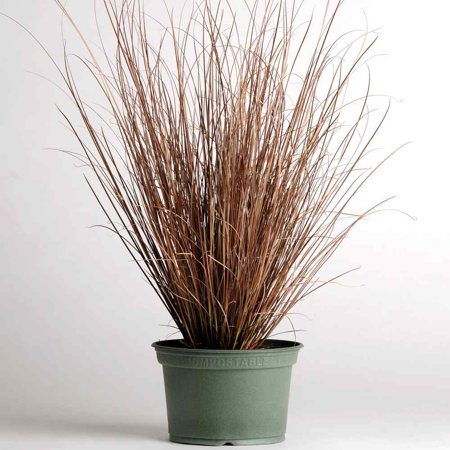Best ornamental grasses for winter interest – 5 varieties for color and texture in the colder months of the year
With striking shades and shapes, these ornamental grasses are ideal for maintaining interest during fall and winter
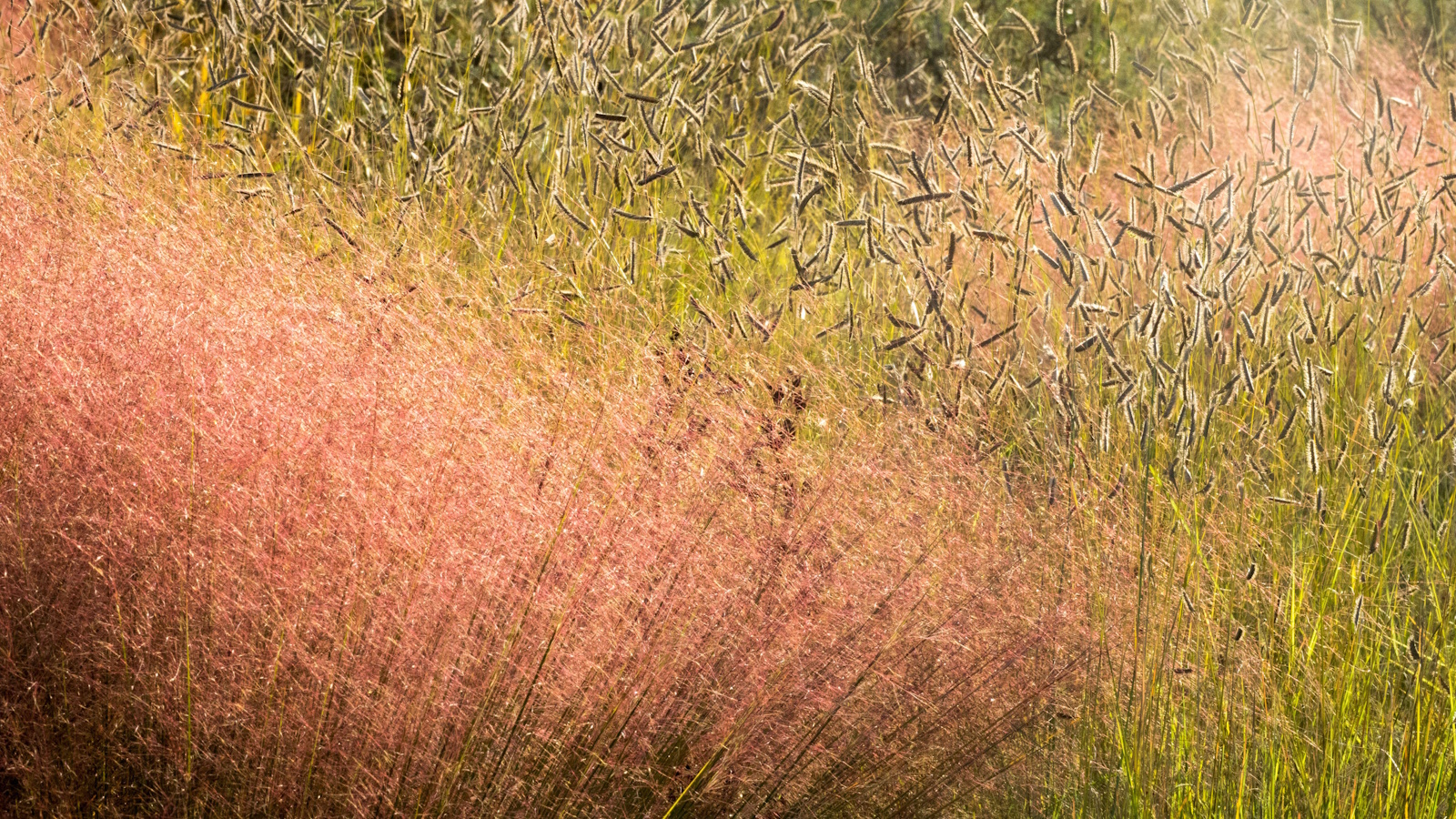

Ornamental grasses are diverse and beautiful plants. Whether you obsess over native prairie grasses found across the United States, as I do, or perhaps you enjoy the lush green blades of Japanese forest grass from further afield, grasses are a must-have for any space.
Offering both structure and texture, ornamental grasses can be used in different ways, be it in meadow-like designs with a wild feel or modern gardens with upright plumages offering form and style. Whatever grasses are grown and however they are planted, they also offer remarkable seasonality. Ornamental grasses come alive in fall and winter, taking on a range of golden shades to punctuate the subdued winter landscape.
So, if you want to add a little winter magic to your plot, ornamental grasses might just be the plants you need to grow. My advice: put the secateurs and loppers back in the garden shed, and leave these dramatic plants to shine through December and January. Here, I share five expert-approved plants, including some of the best native grasses, that will help to keep your borders full of interest during the winter months.
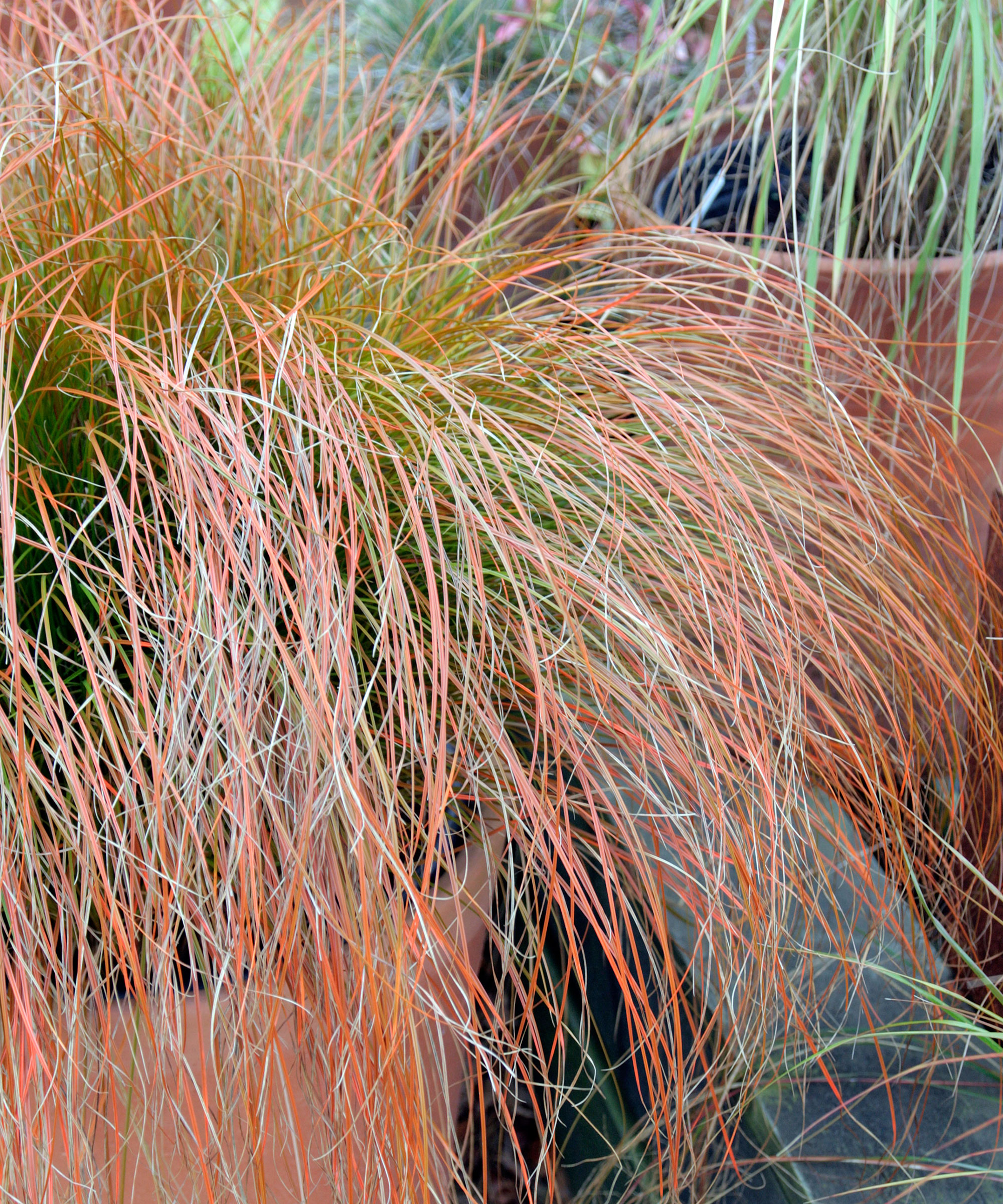
Best ornamental grasses for winter interest
While golden grass blades and dying seedheads moving gently in the breeze can undeniably elevate borders and pots, leaving ornamental grasses to stand in winter also offers advantages beyond simply aesthetics. Grasses are a haven for wildlife, and offer shelter and food for birds, insects and small mammals. So, for low-maintenance wildlife garden ideas, add some of these ornamental grasses for winter interest to your plot.
1. Japanese forest grass

Japanese forest grass, or Hakonechloa macra, is a textural ornamental grass that is endemic to Japan. Considered one of the best plants for Japanese gardens, this species has thick blades that form gentle mounds of cascading foliage.
As a former professional gardener, I grew this plant for many clients across London and can testify to its seasonal brilliance. Lime green in summer, golden-brown in winter - this is an ornamental plant that can provide year-round interest. Pruning is typically done in early spring before new growth begins to shoot.
Growing best from US hardiness zone 5 to US hardiness zone 9, Japanese forest grass can be grown in borders or pots, preferring dappled to full shade, but will equally grow in bright, sunny yards. In my experience, this species performs best in slightly moist soil, such as you would find in a woodland.
Design expertise in your inbox – from inspiring decorating ideas and beautiful celebrity homes to practical gardening advice and shopping round-ups.
Often used in small yards, terraces or rooftop gardens, 'Japanese forest grass is ideal for adding color, texture and sound to urban gardens,' says New York-based garden designer Dima Rumiantcev. 'With an arching form, Japanese forest grass transforms from green to golden-brown shades in the fall and winter, maintaining interest despite the cold weather.'
Japanese forest grass starter plants are available to order from Walmart.

Dima Rumiantcev is a New York-based landscape designer and the founder of award winning DiMastery Studio, specializing in transforming small-scale residential terraces and backyards into beautiful, functional outdoor spaces, attaining a diploma in Landscape Architecture from Saint-Petersburg State Forest Academy. With a deep understanding of horticulture, landscape architecture and design principles, Dima combines creativity with expertise to craft stunning, sustainable gardens that reflect his unique visions.
2. Blue grama
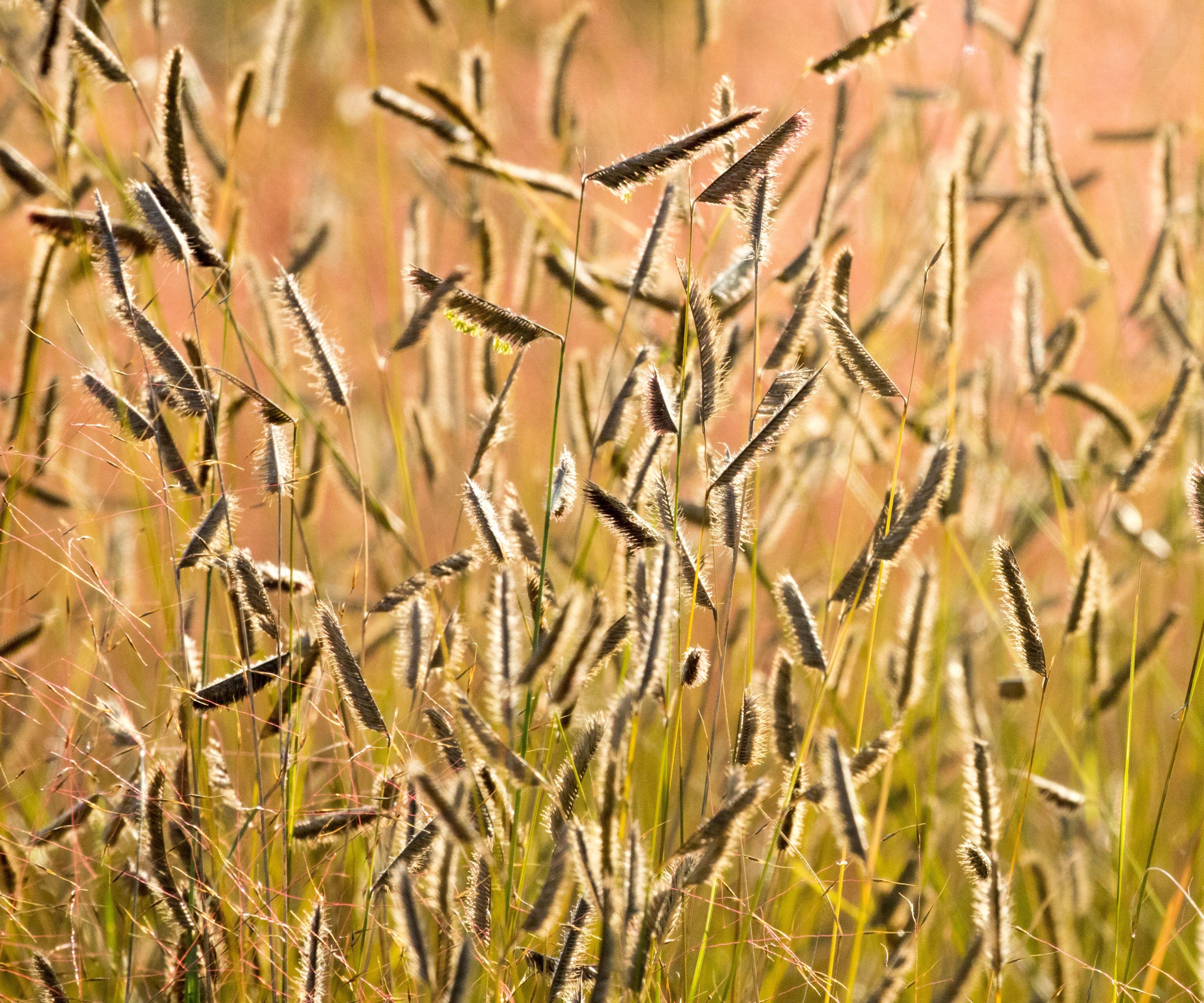
Bouteloua gracilis, commonly known as blue grama grass, is an attractive native prairie plant found growing across the Great Plains and most of the Midwest. I have grown this North American native in the UK, and while it is an attractive summer ornamental plant, the unusual comb or eyelash-like seedheads look particularly impressive in the fall and winter months.
Growing best from US hardiness zone 3 plus, this resilient grass prefers sunny spots and is also remarkably drought-tolerant, too, thriving in meadow-like environments without supplementary watering in the summer.
'Native grasses, like Bouteloua, are certainly an ornamental and wildlife-friendly addition to any garden,' says Maya Argaman, native plant expert and Horticulture Senior Program Coordinator at the California Native Plant Society. 'Whether used as ground covers, understory plants or as statement perennials, grasses are plant powerhouses.'
Blue grama grass seeds are available to order from Walmart.

Maya is the Horticulture Senior Program Coordinator at the California Native Plant Society. She graduated from UC Davis with a degree in Environmental Science and Management, where she fell in love with native plants in both the natural and built environment.
3. Needlegrass
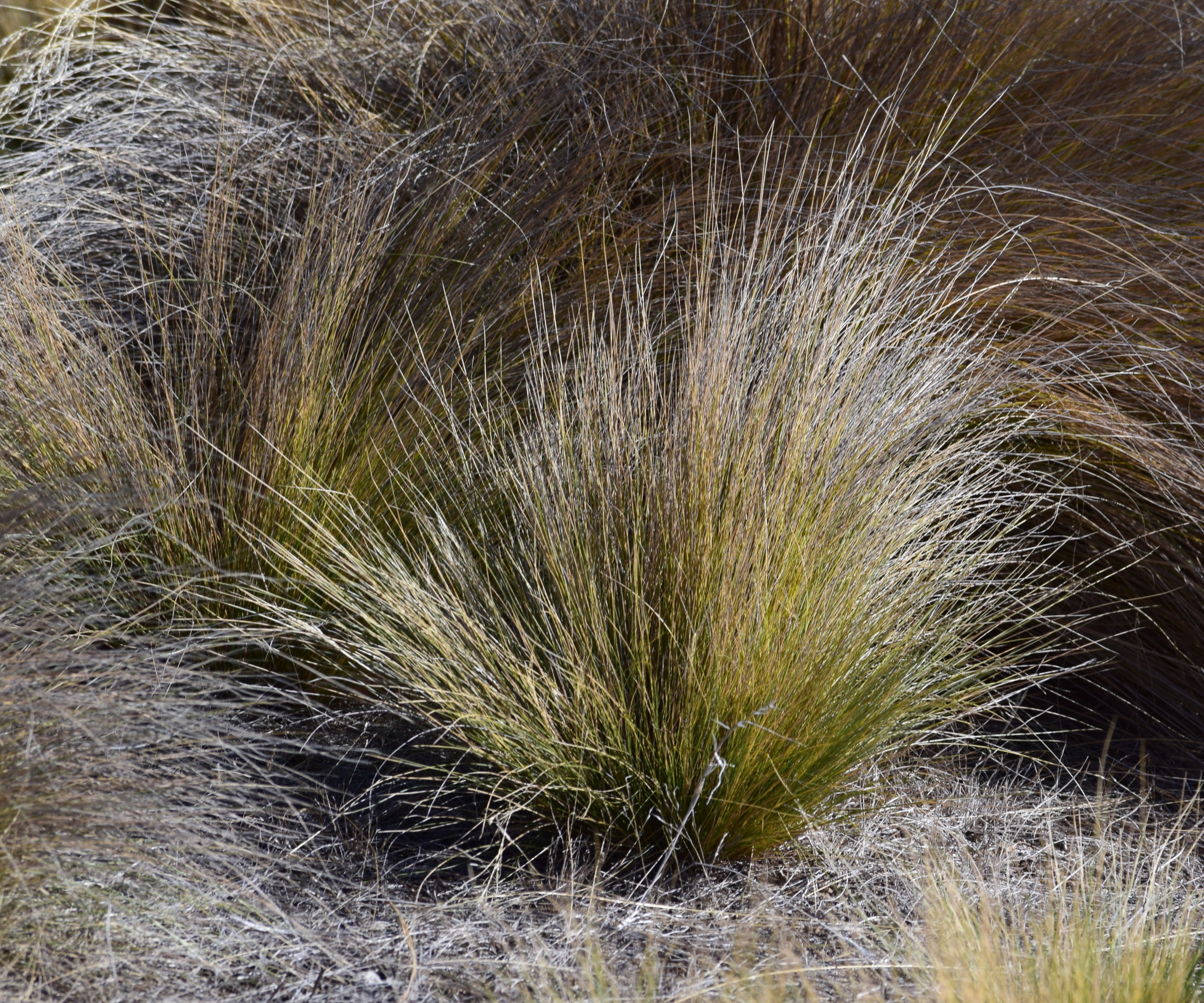
For a native plant that is both versatile and low-maintenance, Stipa, commonly referred to as needlegrass, is a good species to consider. Many native grasses, such as needlegrass, can be 'hardy and versatile', tolerating hot summers and cold winters, 'making them a resilient and reliable addition to gardens,' Maya adds.
In terms of how to grow ornamental grasses, needlegrass does best in open, sunny yards with plenty of sunshine, thriving from US hardiness zone 7 to zone 10.
With over 300 species of Stipa, you are sure to find one to suit your tastes and preferences, with varieties available in silvery greens to deep, rich bronzes. One of my favorites is the 'Goldilocks' variety, combining green foliage with golden oat-like seed heads that look just as impactful in late summer as they do in winter.
Stipa seeds are available to order from Amazon.
4. Switch grass
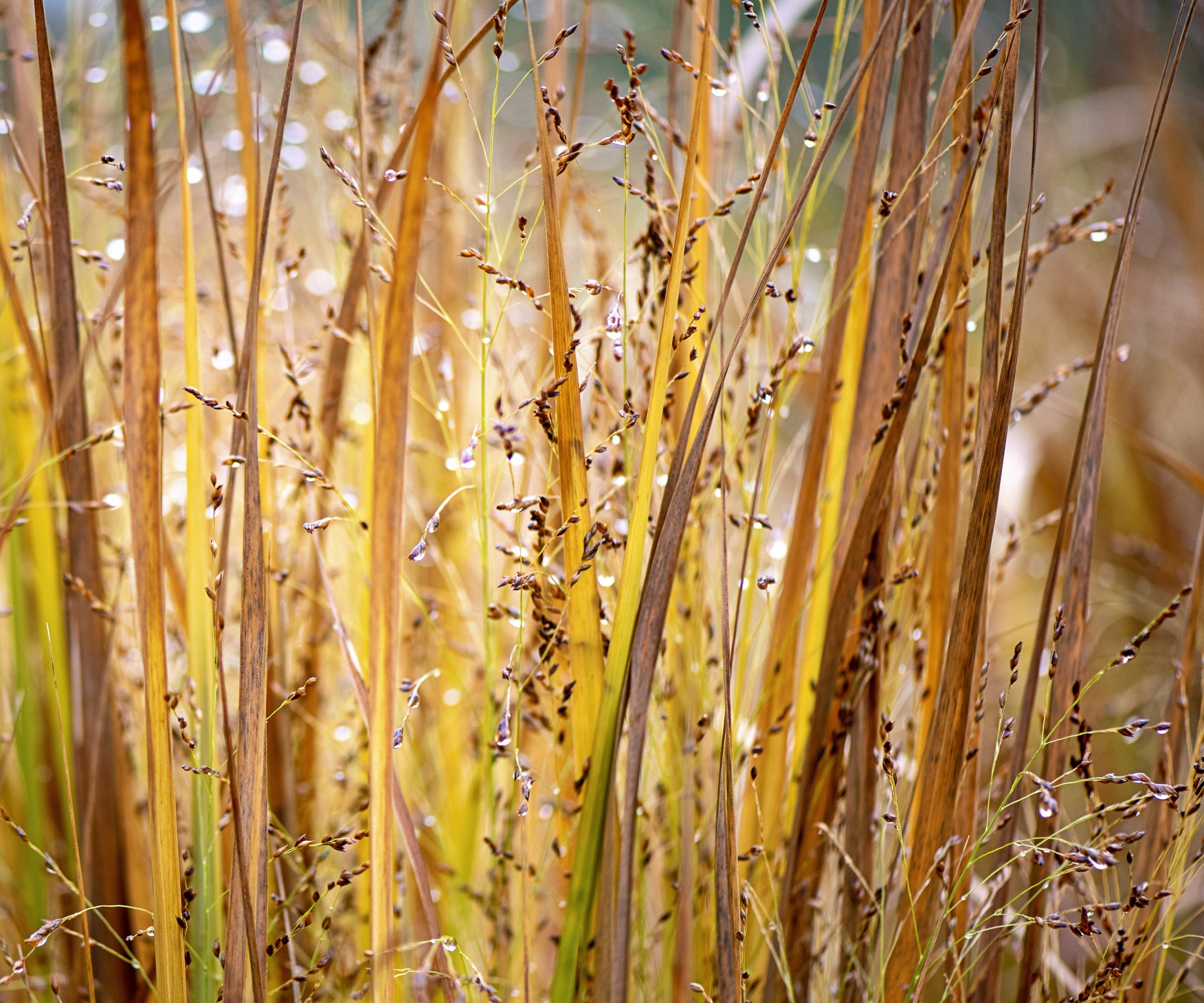
Switchgrass, or Panicum virgatum, is a tall, architectural grass with blades of blue-green that turn crimson and orange in the winter. Native to North America, it is found across much of the central grasslands and prairies. Switchgrass is both hardy and drought-tolerant, growing well from US hardiness zones 3 to 9.
If you are looking for ornamental grasses for privacy, switch grass is a good option, with many cultivars reaching over four or five feet. Come summer, large panicles of white and pink flowers open up and will prove popular with local pollinators.
Leave these seed heads to mature, and despite the frost of winter, switch grass will continue to provide interest in the yard.
Panicum live plants are available from Amazon.
5. Feather reed grass
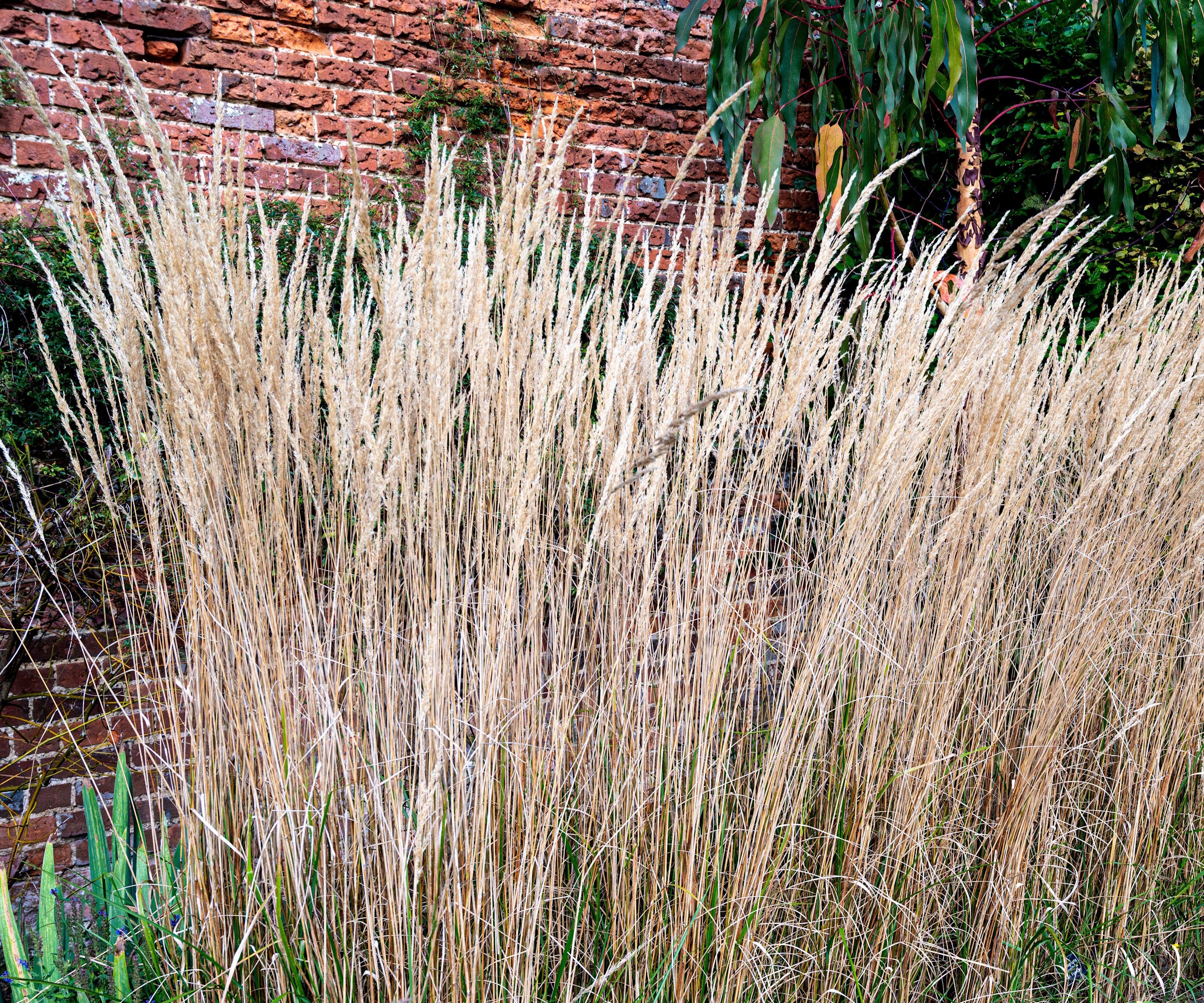
Feather reed grass, or Calamagrostis, is known for its mighty, upright habit, ideal if you are seeking to incorporate plants to maximize upward space as part of your vertical garden ideas.
Native to Europe, feather reed grass displays remarkable seasonal resilience and interest, with distinctive seed heads remaining upright in strong winds and rain during fall and winter.
Growing best from US hardiness zone 5 to zone 9, feather reed grass prefers sunny borders, tolerating most soil conditions but thriving in rich and moist areas. It can grow to five feet tall, so I would suggest planting this towards the back of the border.
Feather reed grass live plants are available from Walmart.
FAQs
When is a good time to plant grasses in my yard?
Fall is an ideal time to plant ornamental grasses, as the soil is both warm and wet. For this reason, plants can settle quickly and establish roots in your yard before the onset of the cold weather. Remember that most grasses thrive in sunny spots, so plant your grass in an open situation. It is also a good idea to incorporate a one to two-inch layer of mulch after planting, to give your new grasses the best start.
Whatever grasses you opt to grow, be sure to mulch in the fall and leave them standing through November, December and January. While they can start to look faded and tired, the seed heads will provide interest through the winter months, and local wildlife will thank you, too. Come March, it is a good idea to cut your grasses down to one inch above the ground, ready for new growth to shoot in the spring.
For more inspiration, see our guide on how to grow Japanese blood grass, for a crimson species that will dazzle in your yard, or see our guide on growing blue fescue grass, for a blue-green species that is evergreen in mild regions with attractive and unusual silvery foliage.

Thomas is a Content Editor within the Gardens Team at Homes and Gardens. He has worked as a professional gardener for both public spaces and private estates, specializing in productive gardening, growing food and flowers. Trained in Horticulture at the Garden Museum, he has written on gardening and garden history for various publications, including The English Garden, Gardens Illustrated, Hortus, The London Gardener and Bloom. He has co-authored a Lonely Planet travel book, The Tree Atlas, due out in 2024.
